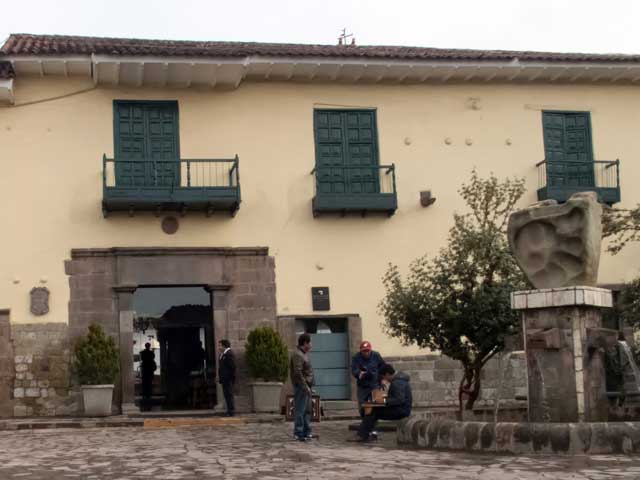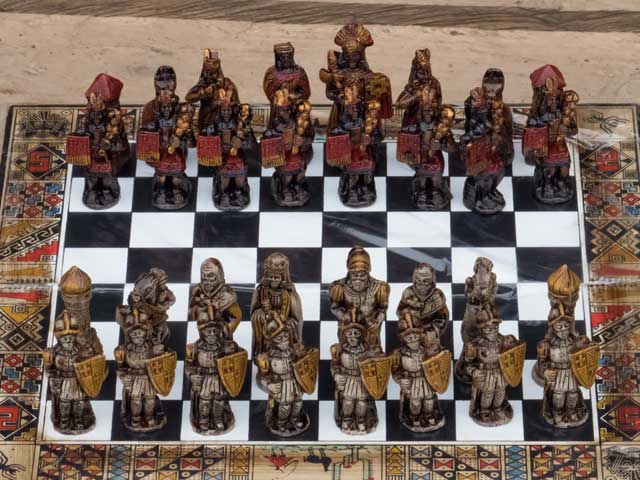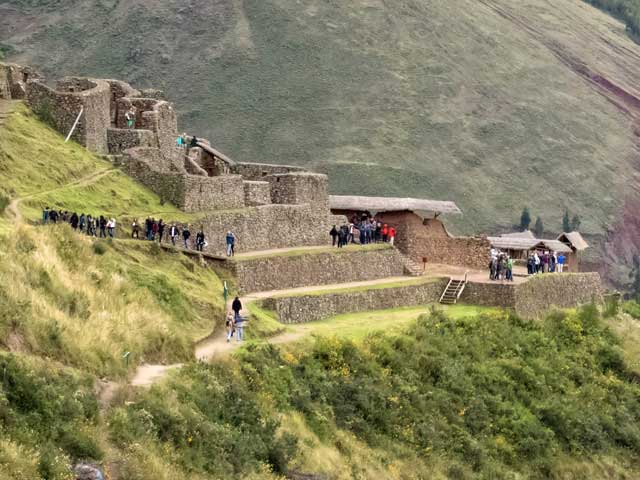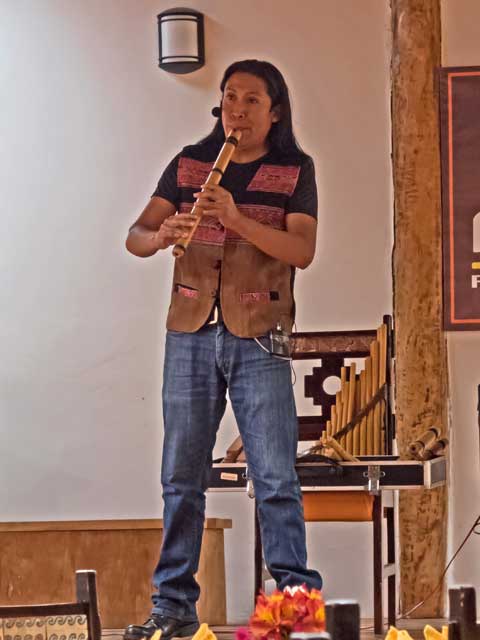
The exterior of the Casa Andina Private Collection Cusco.

Neither of us slept well that night so getting up wasn’t that difficult. After breakfast in the hotel, we packed our bags and waited for Ruben to come and collect us.
We drove out of Cusco by the Saqsaywaman and Pukapukara sites, and cresting a pass turned into a steep walled connecting valley. Of course every valley is steep-walled around here. Eventually this valley empties into the Sacred Valley, and at its mouth we pulled off at an overlook where the Sacred Valley lay like a green ribbon at the bottom with the river flowing northward to the Amazon basin. The road descended by a series of switchbacks to the valley floor at “new” Pisaq. The old one is up in the mountains and that’s where we were headed. We didn’t climb up to the sacred district of ruins but stayed among the terraces that were cultivated during Inca times.
I’ll have to do the narrative in the picture captions from all the pictures I took. I hate to say it but Inca ruins are starting to merge much like the Japanese temples did last year. However, there were a lot of wild flowers of which I could get some decent shots.
One unusual feature of the site was the cliff-face cemetery. The Inca would inter their mummified dead in the cavities of east (sunrise)-facing cliffs, sealing them off with masonry. Unfortunately these tombs had been raided for the artifacts that were buried with the deceased.

Outside the site, among the craft vendors, chess sets were offered - one side Spanish, the other Inca.

More ruins - Ruben made a point to collect us early to avoid crowds today - and the crowds started arriving.
We descended into Pisaq to the open-air food market where Ruben showed us several of the thousand varieties of potatoes. Another stall sold quinoa and lupine beans and was staffed by an older woman and an adorable young girl.
Because there was no opportunity to pick up a stone from a site that wasn’t sacred, I bought my two stones for my rock box display in the market. I was going to negotiate with the vendor, but Jonathan took exception so at his insistance I paid asking price (!) for the second stone after getting her to drop the price of the first stone (hematite) by S/.5. Ruben had a horrified look on his face as he witnessed the whole transaction.
From there Ruben took us to a reputable shop selling alpaca woolens and jewelry. One of the shop’s staff explained how to tell the difference between alpaca wool and fakes (usually synthetics). And then proceded to do the same for silver jewelry (too late!). We looked as some of the silver, but ended up getting a brightly colored alpaca sweater for each of us, plus scarf and a pair of gloves (for me).
We drove for while further down the valley past corn and quinoa fields until we reached the restaurant for lunch, muña. The buffet was excellent, with many Peruvian dishes to sample – alpaca stroganoff, ceviche, and others.
…the piece on the right is silver. The piece of the left has been adulterated with other metals (it's yellow), and the piece in the center is too shiny

Unlike Elvis on the Delfin, this flutist had a large selection of instruments plus a recording for accompaniment.
